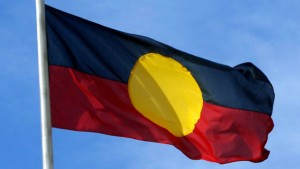Home » Commentary » Opinion » Attempts to shoehorn indigenous studies into foreign language courses makes hard subjects even harder
· The Daily Telegraph

 In education, some people want to try any new fad — except things that will actually improve student learning.
In education, some people want to try any new fad — except things that will actually improve student learning.
The latest episode in this trend is inserting Aboriginal and Torres Strait Islander (ATSI) cultures and histories into the NSW syllabus for learning foreign languages such as French, Spanish, Chinese and Arabic.
For example, the new syllabus for Arabic includes the following: “identifying Aboriginal languages spoken in New South Wales, including the local language” and “engaging in Arabic with an Aboriginal Dreaming or cultural story from an Aboriginal-authored or endorsed text.”
Of course, all Australian students should be taught about ATSI culture; and that is already happening in every school. It isn’t controversial.
But why does it have to be part of the foreign languages curriculum? Learning another language at school is hard enough, without shoehorning extraneous and unhelpful content into the syllabus.
We all want young Australians to be knowledgeable and respectful of Aboriginal culture — but this doesn’t mean every school subject has to have an ATSI focus. If anything, overdoing ATSI content in unrelated subjects will just create student boredom and resentment.
There are subjects in which elements of Indigenous culture can be incorporated in other academic disciplines in an intelligent way. A unit on the aerodynamics of boomerang flight is a good example of teaching core physics content using a unique and highly relevant example from traditional ATSI skills.
However, too often it is well-intentioned but unjustified tokenism that allows the cross-curriculum priority box to be ticked — with no concern for the impact on student learning.
The foreign languages syllabus is not an isolated case. A few years ago during my teacher education degree, we had to attend three days of ‘Aboriginal awareness training’.
Given the concerning fact that Indigenous school students get worse results than non-Indigenous students on average, it seemed like a good idea. But unfortunately, the ‘training’ turned out to be a series of motherhood statements dressed up as cultural engagement.
Genuinely important questions like ‘what are the underlying reasons for the Indigenous student achievement gap?’ or ‘what are the most effective ways of helping Indigenous student master literacy and numeracy?’ weren’t even discussed.
Instead, time was wasted debating how very technical points of the economics syllabus might possibly be intertwined with ATSI culture and histories (apparently with an eye to winning the Robin Hood award for drawing the longest bow ever).
The broader issue is that the curriculum is already cluttered. The ‘cross-curriculum priorities’ — whereby time-poor teachers are expected to magically fit broad topics like ATSI culture or ‘sustainability’ into every subject — make it more crowded than a Sydney train at peak hour. They are more of a hindrance than a help.
Every hour in the school week is crucial; and should be spent productively. Important and difficult subjects with a limited number of class hours per week, such as foreign languages, should be decluttered so students can gain a more rigorous knowledge of the substantive content.
It’s all very well to aspire for schools to form culturally sensitive citizens, but the truth is this depends on core content being taught effectively.
Literacy, numeracy, and a sound and well-rounded knowledge of the core disciplines are the basis of a good education — not generic cross-curricular areas.
And recent surveys show that parents want schools to focus on the fundamentals. A Monash University poll found 70 per cent of Australians think basic literacy and numeracy are the most important part of education, and 75 per cent think maths and English should be prioritised.
So there is widespread public support for a renewed emphasis on improving teaching of the core subjects. Including generic capabilities in the curriculum may be part of the education fashion nowadays, but they are not necessarily the priority of most parents.
There are still many children who aren’t learning how to read or do basic maths. One in five Australian Year 4 students are below the international benchmark for reading.
And Australia’s literacy and numeracy results on international school tests have been declining — despite substantial increases of taxpayer funding for schools in recent years.
Given we’re putting more money in while getting worse results, the solution isn’t to expand the curriculum to cover even more content, especially in ways that make no sense educationally.
Instead we should focus on teaching the core parts of the curriculum better. This can be done, for example, through more rigorous teacher education at universities and evidence-based reading instruction in the early years of school — and this wouldn’t require much more money.
There is a place for cultural awareness in the curriculum and there are ways to do it effectively. Making children talk about the Dream Time in Arabic is not one of them.
Blaise Joseph is an education Research Fellow at The Centre for Independent Studies and a former teacher.
Attempts to shoehorn indigenous studies into foreign language courses makes hard subjects even harder